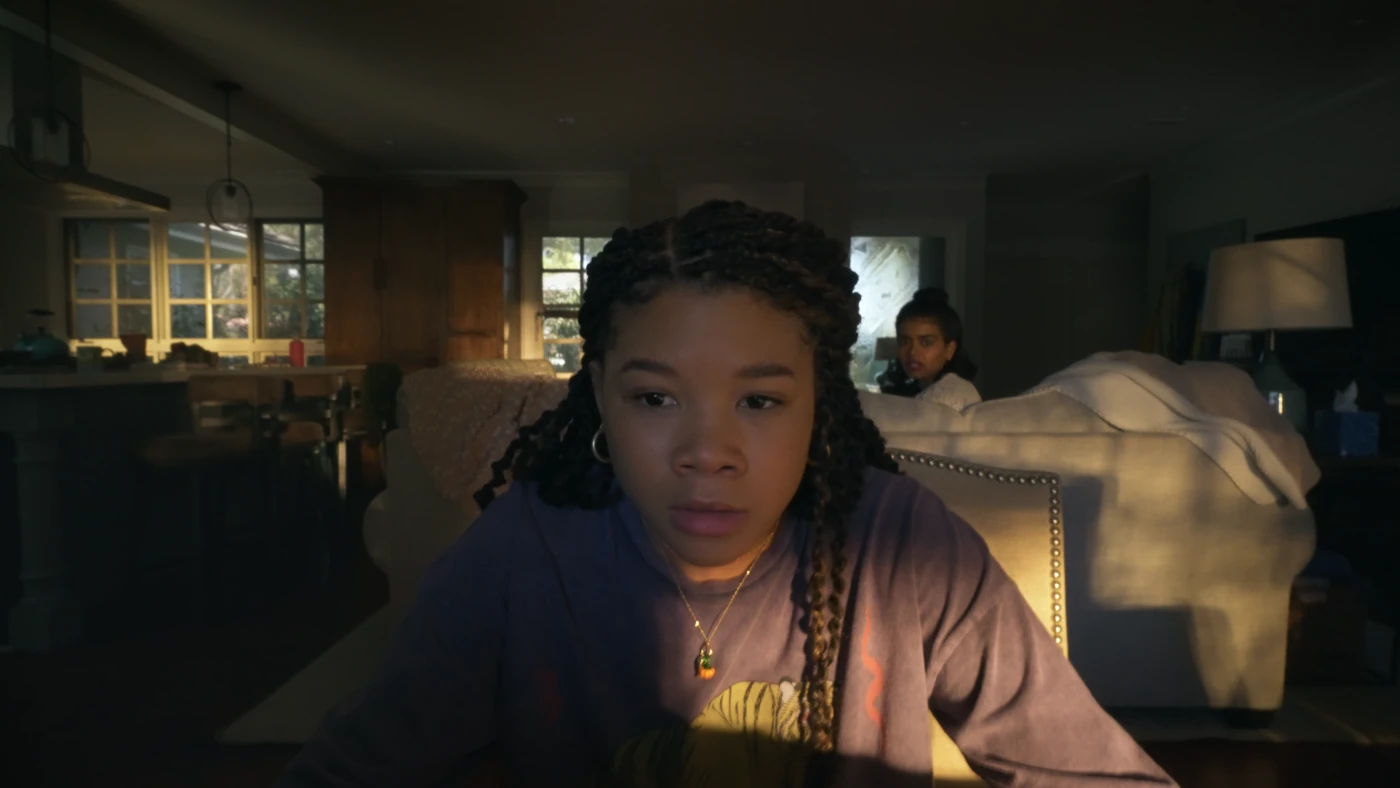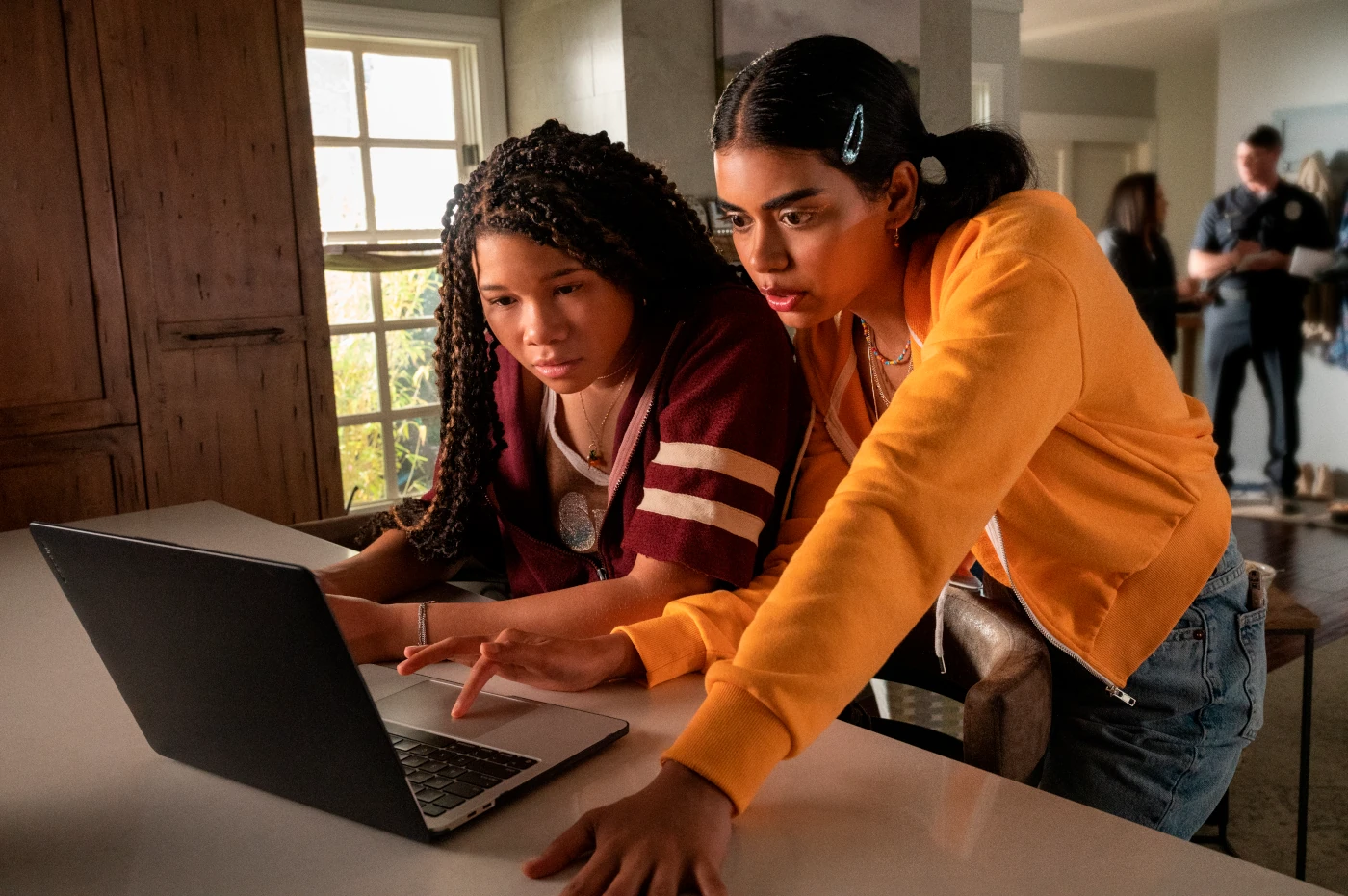Langreview English Version Fakten & Credits
The technical revolution has been going on for years and is increasingly overwhelming people and thus entire societies. We recently reported on the influence of Chat GPT and other artificial intelligences that will massively change life at work and in private. This, combined with increasing worldwide surveillance, can make for an extremely unappetising mixture, as already revealed to us in THE NET (1995) with Sandra Bullock and ENEMY OF THE STATE (1998) with Will Smith. The latest developments are also being taken up in the film industry, and in 2014 UNKNOWN USER was one of the first works that basically takes place entirely on a computer screen and raised the possibilities of digital terror to a new level.
Immediately, the genre designation „desktop film“ or also „screen movies“ emerged. Producer Timur Nuruachitovich Bekmambetov, who also worked on UNKNOWN USER, laid down the following basic rules of the genre (abbreviated here) on moviemaker.com in 2015: [1] The location of the action is a specific computer screen. The entire story is developed on this device. [2] The action takes place in real time and thus more or less without cuts. [3] Sounds and music must come from the computer and be comprehensible as such by the audience.[1] This postulate, however, can no longer be regarded as current that Bekmambetov himself has produced a film with SEARCHING, which does not fulfil certain conditions and can nevertheless be assigned to the genre. In this film, director Aneesh Chaganty devotes himself to uncovering a criminal case. The two editors Nicholas D. Johnson and Will Merrick have now come together again to continue the genre with MISSING and to develop a franchise in the broadest sense.
That’s what it’s all about
It should actually be a horny time for young Junes, as her mother Grace and her mother’s partner go on holiday together in Colombia, giving Junes the whole house to herself. Good moods, meeting friends, partying are the order of the day. But when Grace doesn’t answer Junes‘ messages, she gets suspicious. It doesn’t take long for her to suspect that something must have happened and so she starts looking for clues and spies on her mother. In the process, the suspicion grows that she has been kidnapped by her lover. After Junes calls in the FBI, it soon comes to light that he is a once-convicted felon. A race against time begins as the international search causes some problems and Junes is forced to solve the mystery with the help of the digital world. Will she ever see her mother alive again?
Review
The directing duo doesn’t even try to disguise what they want to offer their audience. The film poster and title already make it unmistakably clear what story development we can expect. With MISSING, they create a fast-paced thriller that once again addresses the basic values of the genre. With simple means, a wonderful build-up of tension is created, which repeatedly leads to unexpected twists and thus reshuffles the cards without taking on kitschy and predictable developments. Similar to SEARCHING, the team uses a family story, but now turns the distribution of roles upside down. The questions ‚How well do we really know our loved ones?‘ and ‚How would we react in such a situation and how realistic are the actions shown?
Despite a somewhat lengthy expository introduction, curiosity does not fade, because while the character dynamics are slowly established, we as the audience are challenged to get used to constantly looking at a computer or mobile phone screen, as the entire action takes place only on these devices. This perspective is still completely new territory for many and offers some challenges. While „normal“ films usually have a clear focal point where essential elements of the plot happen, MISSING breaks this rule and lets the eye roam to all corners of the cinema screen, as information and details can be found almost everywhere. Really important elements are nevertheless highlighted with a zoom into the user interface, even if they sometimes appear so large that it is not at all easy to grasp them in one glance. It is commendable that, as is usual in digital zooming, an enlargement also leads to pixelation of the images and the quality is not constant.
The development of a new genre
Johnson and Merrick exploit the possibilities of such productions even further than we have seen in comparable works. Almost anything that offers a screen or camera is now used for visualisation. In addition to computers and mobile phones, this also includes smartwatches and surveillance cameras, for example, which means that the once so rigid format now becomes much livelier and, above all, more flexible through the erratic use of screens. The possibilities for observing action thus increase almost to infinity and at the same time allow for completely new camera perspectives that can be explained without difficulty. This way of watching films can be quite exhausting, since longer storylines take place completely without editing and the many events on screen and canvas are unfamiliar even to intensive technology users.
A wonderful leading lady has been found in Storm Reid, who at just 20 years of age has already devoted more than half her life to the film industry. Since we only see her in portrait for large parts of MISSING, a comprehensive mimic performance is indispensable. Be it the hopeful look, the despairing expression or the shocked stiffened expression – we get the whole range and are allowed to walk a path of suffering together with the protagonist. Other actors such as Tim Griffin, Nia Long and Ken Leung only form a guest ensemble and therefore have relatively little screen time. They usually appear in interestingly created flashbacks, which are characterised by appealingly developed dialogue.
Plot holes spoil the viewing pleasure
Unfortunately, certain developments seem very contrived and far removed from reality. Whether this is due to the fact that the United States is on a different technical and bureaucratic level than we are in Germany or whether the team wanted to make use of simpler mechanisms such as deux ex machina and plot-convinience in order to save time in the creative phase remains questionable. In any case, it seems extremely strange when an FBI agent responds to a missing person’s report after less than a day and immediately contacts the protagonist again and again via Facetime and sends her various investigation data. The hacking abilities of Storm Reid’s character are also comprehensible to a certain extent, but as a whole, they undermine the real possibilities and clearly contradict logic in some points.
 Conclusion
Conclusion
Anyone who has already been able to do something with SEARCHING or UNKNOWN USER and wants to enter new terrain in film development should definitely give MISSING a chance. Both as a crime and thriller but also as a new-fangled desktop film, this flick works wonderfully and offers us an exciting plot that changes direction more than once and questions family constructs in particular. It seems a little surprising that in the otherwise all-round enjoyable plot, slip-ups creep in again and again, which could have been explained relatively simply and coherently, but are then equipped with partly pointless solutions to problems. In conclusion, however, it remains to be said that MISSING advances the development of the novel desktop film genre within the scope of its possibilities.
How did you like the movie?
Source









 (2 Bewertungen, Durchschnitt: 9,50 von 10)
(2 Bewertungen, Durchschnitt: 9,50 von 10)



Hinterlasse einen Kommentar